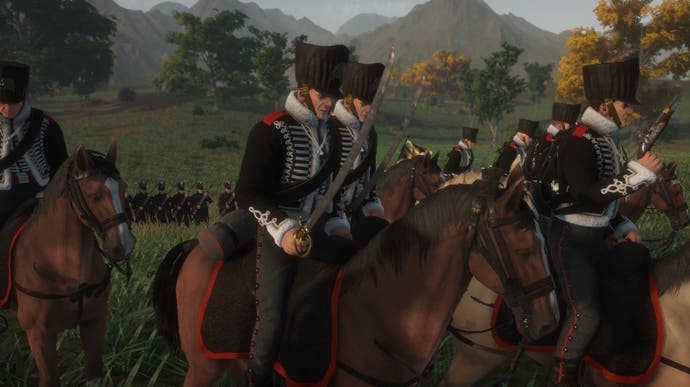Holdfast: Nations at War is a roleplaying gem tied up in the very best and very worst of the online world
Beef Wellington.
You might have spotted a video doing the rounds in the last couple days featuring a very excited Scottish lad, taking part in a very exciting siege, inside a weirdly unfamiliar looking game. That game is Holdfast: Nations at War, a relatively unknown, historical first- and third-person shooter with a twist, and it turns out it's an absolute treasure.
Holdfast is a shooter, but really it's a roleplaying game first. Imagine an extra grounded, Napoleonic-era Battlefield, with servers that can handle up to a whopping 150 players, crossed with the cooperative, teamwork-heavy systems of something like Sea of Thieves, and you'll get a bit of an idea. Matches roll swiftly from one to the next, with a good number of rotating objectives and maps - sieging and holding forts or castle ruins, pushing war-of-attrition frontlines to reach a total team score, holding out against enemy onslaughts before a timer expires, and so on.
The roleplaying, as it does in Sea of Thieves and others like it, comes in through all the little things. For a start, Holdfast's weapons are enjoyably useless. The more standard classes, like Line Infantry, Light Infantry, Grenadiers and Guards are mostly equipped with a musket, a detachable bayonet, and your bare fists. The gunpowder-based muskets are completely terrible at anything beyond medium range, have huge bullet drop and randomised spread, and take forever to reload between each round, and the melee system, too, is wildly inaccurate, so everything has to be calculated. There's no point taking pot-shots at distant enemies that you'd usually fancy if anyone's even close to charging distance from you, as even if the melee is inaccurate, it's still a one-hit kill when someone gets it right. Immediately you start to think like a "proper" infantryman, grouping and looking for some kind of strategic direction.
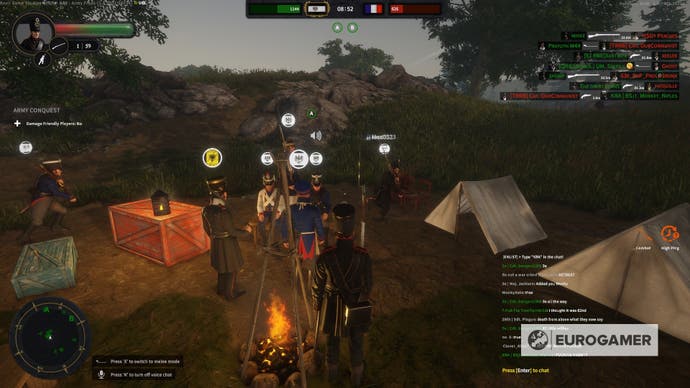
That, in turn, comes from its wonderfully silly, but vivid class system. Each side can have scores of basic infantry, but only five or six of the specialist officers, artillery operators, sappers, doctors and musicians. Each of those classes has some minor buffs that nudge you into playing it a certain way, so Line Infantry gain a boost to accuracy when standing in an actual line with other players, or they get buffs from kneeling, buffs from nearby musicians and flag-bearers, or even from standing exactly where an officer tells you to stand. Guards buff each other and the officers they're guarding by staying close by, officers can issue proper commands with visual aids, use spy glasses to see further (there's no map, so proper scouting and communication really helps), and ride the small amount of cavalry available.
If it all sounds ludicrously nerdy it's because it really is, but the thing about nerdiness like this is it tends to come with wonderful enthusiasm and commitment attached. It's impossible not to get sucked in, so before you know it - like that Scottish player who seems to have been born in the wrong era - you'll have gone from cursing the hapless rifles to chanting "VIVE LA FRANCE!", marching in perfect formation and answering "Yes, sir" to a captain whose voice chat orders sound an awful lot like they're coming from a teenager in rural Alabama.
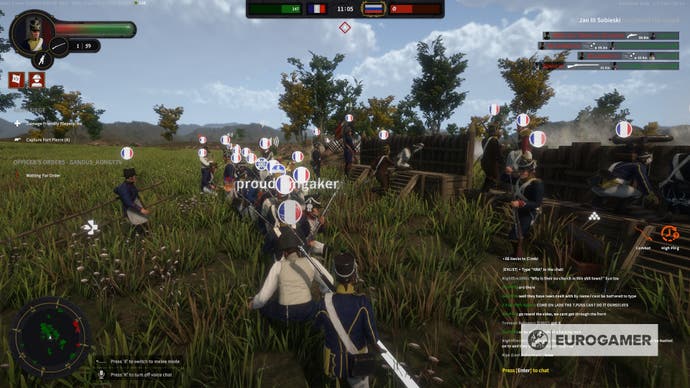
That, however, isn't the half of it. Holdfast's community really gets going in the private servers, which tie into the game's regiments system. There's no progression or meta-game to Holdfast - a massive boon, in my opinion - but wider meaning is gained from the regiments that are essentially roleplaying clans. Join one, like the dominant "1st King's Royal Army" or "51st (2nd Yorkshire West Riding) Regiment of Foot", and you'll be encouraged - or forced - to join their respective Discord server, where you'll find friendly veterans holding training courses, some of which compulsory, and weekly battles at set times.
A little cheekily (not that I knew any better - Holdfast explains almost nothing about itself), I joined a public "Line Battle" server for a few matches that seemed like it was really intended for proper regiments, which is where they seemed to really get going. Line Battles have fixed rules: you can only fire when you're in a line, standing (no kneeling!) shoulder-to-shoulder with at least four allies. You can't fire while charging, or charge on your own. Basically, you get in line and do what you're told, normally by someone doing their best attempt at a well-to-do British accent. It's wonderful.
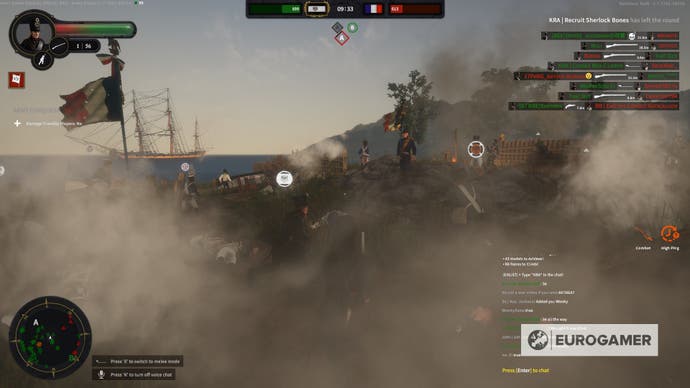
In the last few nights I've lost hours to it, being marched around a field like little ducklings in a row, as a couple officers charge off on cavalry to scout ahead, reporting back to our local officer who then scans the horizon for some indeterminable movement we lowly infantry can't make out without telescopes of our own, and quite literally tells us where to shoot: "Orange-leafed tree, quite a long one, look left for the smoke cloud from their gunfire, bottom of your reticule just above their heads. Aim, fire." And normally miss. On and on it goes, twenty or thirty of you in each group, loading, aiming and firing in perfect unison, maybe getting one hit amongst the lot of you, if you're lucky, before more lengthy reloading and re-maneuvering and re-re-maneuvering, fixing and un-fixing bayonets and then, eventually, haplessly charging to your death. I'm hooked.
The magic, of course, is that these are all self-imposed rules, devised entirely from the sheer imagination and boundless enthusiasm of what is, really, a very small community. Like Sea of Thieves it's a lesson in minimalism-with-intent, and how just a few, smartly-aligned basics can be enough rules for your most dedicated players to do the rest - and the rabble like me can't help but fall in line.
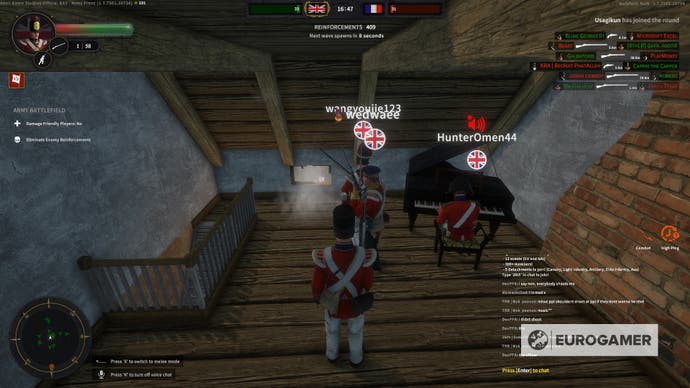
There is, all that said, a massive caveat, in the inevitable flipside to these better parts of the internet: the main public servers have a problem with some catastrophic toxicity. Holdfast is developed and published by the tiny, Malta-based Anvil Game Studios, which lists nine people in total on its team. It left Steam Early Access earlier this year, in March, having been there since 2017, and has been plucking away at about 700-odd concurrent players a day ever since, but thanks to that little viral TikTok it's had a sudden surge in popularity. And with viral popularity, especially amongst people of a certain age, comes all the worst that the internet has to offer. Public servers are chock full of mic-spamming, which ranges from some harmless, memeified music over voice chat, like flute-players blasting out both their tinny little in-game tunes and speaker-destroying techno over their mics all at once, which just adds to the enjoyable chaos, to the truly, unspeakably vile - and everything in between.
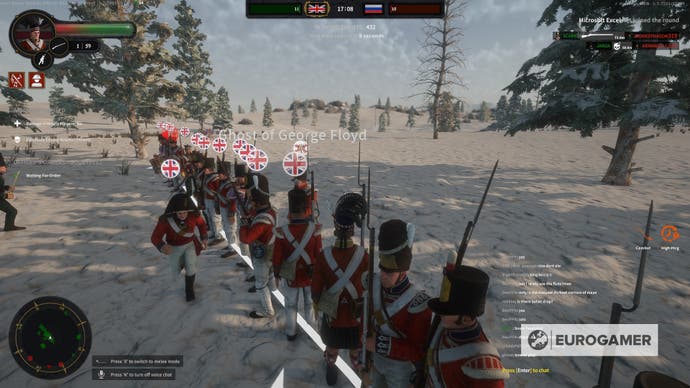
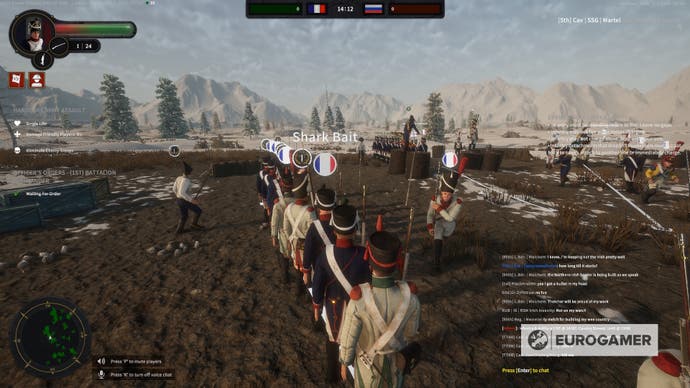
Holdfast's reddit is pretty quiet, given its size and emphasis on using Discord, but there are already a few posts from new players wondering what the deal is, met by a handful of old hats resigned to the fact that there's apparently little this small developer can do. There's a mute mic-spammers option, which does turn off the most constant offenders and might save you a headache, but otherwise you're on your own, needing to manually go through the 150-odd players in each server to mute the individual offenders and just hope you don't encounter them again.
It's a crying shame, because clearly Holdfast: Nations at War is a game built for and around its diehard community, and those diehards, from my brief encounter with them, seem genuinely lovely and just glad to be seeing a few more players. It means that in most cases, on the big, public, official servers, each round is met with total chaos, the very best and very worst of human behaviour in microcosm - smashed together in a truly 2020 battleground - while the quieter corners offer the total opposite: a welcoming, charmingly strange escape. Here's hoping Anvil can wrangle it towards the latter, because beneath all the noise is a bit of a gem.
